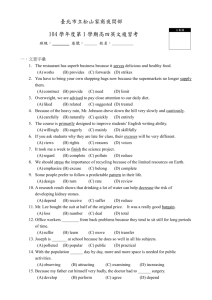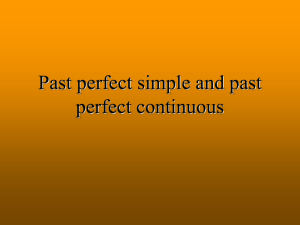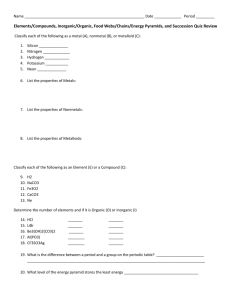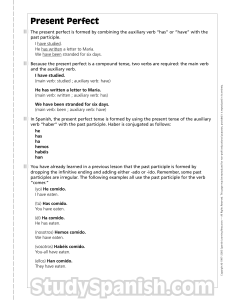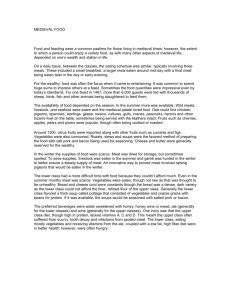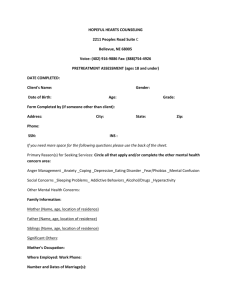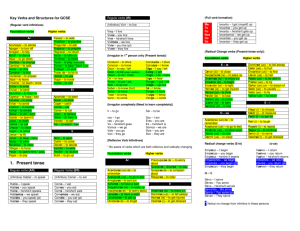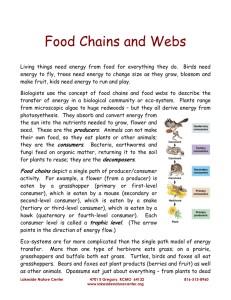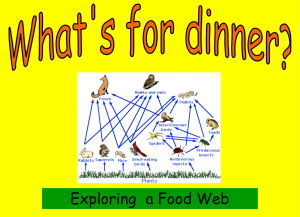Repaso de capítulo 11
advertisement
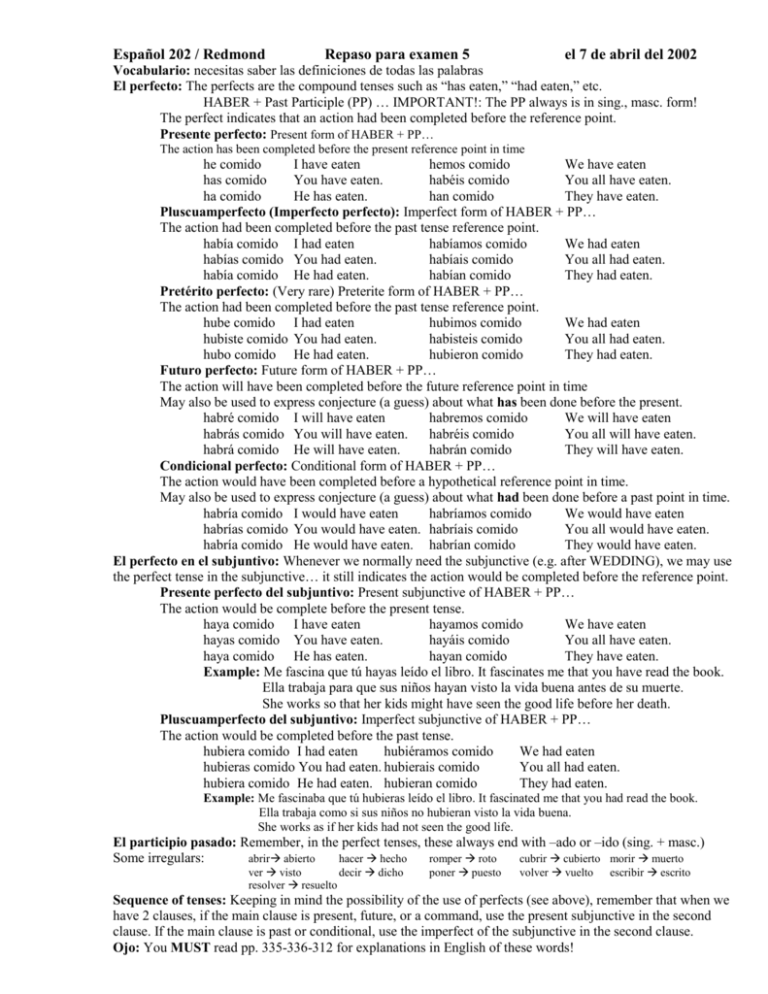
Español 202 / Redmond Repaso para examen 5 el 7 de abril del 2002 Vocabulario: necesitas saber las definiciones de todas las palabras El perfecto: The perfects are the compound tenses such as “has eaten,” “had eaten,” etc. HABER + Past Participle (PP) … IMPORTANT!: The PP always is in sing., masc. form! The perfect indicates that an action had been completed before the reference point. Presente perfecto: Present form of HABER + PP… The action has been completed before the present reference point in time he comido I have eaten hemos comido We have eaten has comido You have eaten. habéis comido You all have eaten. ha comido He has eaten. han comido They have eaten. Pluscuamperfecto (Imperfecto perfecto): Imperfect form of HABER + PP… The action had been completed before the past tense reference point. había comido I had eaten habíamos comido We had eaten habías comido You had eaten. habíais comido You all had eaten. había comido He had eaten. habían comido They had eaten. Pretérito perfecto: (Very rare) Preterite form of HABER + PP… The action had been completed before the past tense reference point. hube comido I had eaten hubimos comido We had eaten hubiste comido You had eaten. habisteis comido You all had eaten. hubo comido He had eaten. hubieron comido They had eaten. Futuro perfecto: Future form of HABER + PP… The action will have been completed before the future reference point in time May also be used to express conjecture (a guess) about what has been done before the present. habré comido I will have eaten habremos comido We will have eaten habrás comido You will have eaten. habréis comido You all will have eaten. habrá comido He will have eaten. habrán comido They will have eaten. Condicional perfecto: Conditional form of HABER + PP… The action would have been completed before a hypothetical reference point in time. May also be used to express conjecture (a guess) about what had been done before a past point in time. habría comido I would have eaten habríamos comido We would have eaten habrías comido You would have eaten. habríais comido You all would have eaten. habría comido He would have eaten. habrían comido They would have eaten. El perfecto en el subjuntivo: Whenever we normally need the subjunctive (e.g. after WEDDING), we may use the perfect tense in the subjunctive… it still indicates the action would be completed before the reference point. Presente perfecto del subjuntivo: Present subjunctive of HABER + PP… The action would be complete before the present tense. haya comido I have eaten hayamos comido We have eaten hayas comido You have eaten. hayáis comido You all have eaten. haya comido He has eaten. hayan comido They have eaten. Example: Me fascina que tú hayas leído el libro. It fascinates me that you have read the book. Ella trabaja para que sus niños hayan visto la vida buena antes de su muerte. She works so that her kids might have seen the good life before her death. Pluscuamperfecto del subjuntivo: Imperfect subjunctive of HABER + PP… The action would be completed before the past tense. hubiera comido I had eaten hubiéramos comido We had eaten hubieras comido You had eaten. hubierais comido You all had eaten. hubiera comido He had eaten. hubieran comido They had eaten. Example: Me fascinaba que tú hubieras leído el libro. It fascinated me that you had read the book. Ella trabaja como si sus niños no hubieran visto la vida buena. She works as if her kids had not seen the good life. El participio pasado: Remember, in the perfect tenses, these always end with –ado or –ido (sing. + masc.) Some irregulars: abrir abierto hacer hecho romper roto cubrir cubierto morir muerto ver visto decir dicho resolver resuelto poner puesto volver vuelto escribir escrito Sequence of tenses: Keeping in mind the possibility of the use of perfects (see above), remember that when we have 2 clauses, if the main clause is present, future, or a command, use the present subjunctive in the second clause. If the main clause is past or conditional, use the imperfect of the subjunctive in the second clause. Ojo: You MUST read pp. 335-336-312 for explanations in English of these words!
